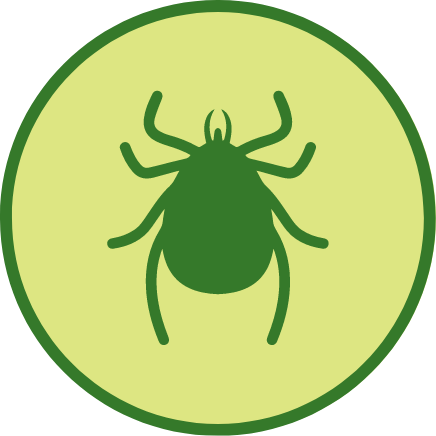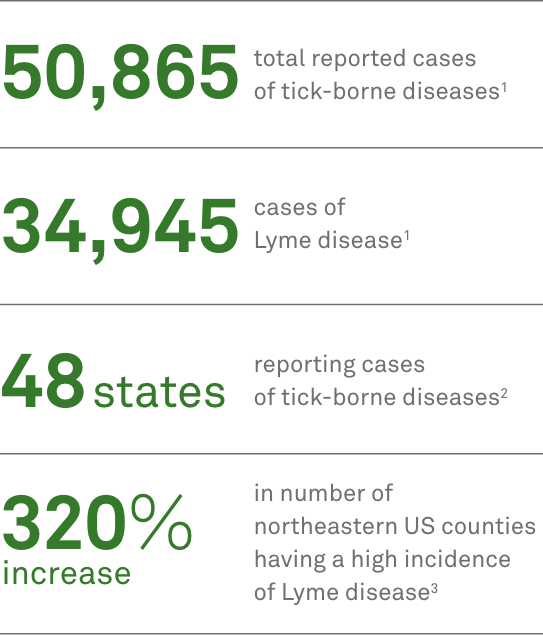It’s time to be on the lookout for ticks
In addition to the woods and thick, tall, grassy fields, ticks are frequently found in our backyards and on our pets. As we spend more time outdoors, it’s important to keep in mind what can be done to stay safe.
Early detection is key
If you notice a bite or you’re having symptoms, you need to speak with your doctor about getting tested. Many tick-borne diseases can be treated if caught early. That’s why timely testing is important.
Tick-borne disease:
a growing problem across the country
Cases of tick-borne diseases, primarily in the spring, summer, and fall in the Northeast and Mid-Atlantic, continue to be reported in large numbers.
If you find a tick…
or think you’ve been bitten or have symptoms, take these important steps and consider getting tested
|
|
Talk to your doctor |
|
|
Discuss next steps with your doctor |
It’s easy to get tested
Because timing is so important when it comes to getting tested and starting the right treatment, we make it easy for you and your family members to get the tests you need right away.
- Testing is available in your doctor’s office or at a convenient Quest Patient Service Center
- Quest is in-network with most major insurance providers, which can reduce your out-of-pocket costs
- Our Patient Assistance Program tailors solutions for uninsured or underinsured patients based on individual circumstances and may adjust some or all laboratory charges if you cannot afford to pay for your testing
References:
- CDC. Tickborne disease surveillance data summary. Revised August 11, 2022. Accessed February 24, 2023. https://www.cdc.gov/ticks/data-summary/index.html
- CDC. Overview of tickborne diseases. Reviewed August 5, 2022. Accessed February 24, 2023. https://www.cdc.gov/ticks/tickbornediseases/overview.html
- Kugeler KJ, Farley GM, Forrester JD, et al. Geographic distribution and expansion of human Lyme disease, United States. Emerg Infect Dis. 2015;21(8):1455-1457. doi:10.3201/eid2108.141878
Image content features models and is intended for illustrative purposes only.









